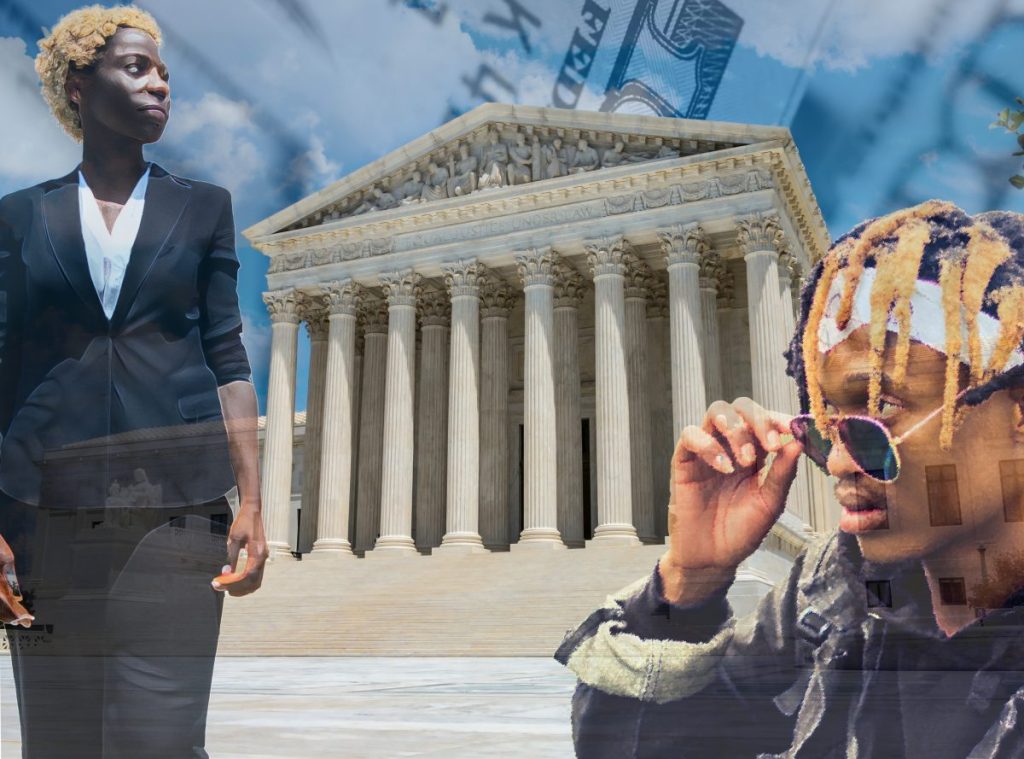By Lori Lee
NDG Contributing Writer
As the conservative Supreme Court has churned out decisions over recent years, the political environment has changed dramatically. In June of 2022, with the overturning of Roe v. Wade, support for abortion showed significant increase, reports the BBC.
The court has also been chipping away at voting rights recently. Federal courts have been involved in redistricting since the sixties, but in 2018, the Supreme Court weakened federal court oversight, granting a presumption of good faith to state legislators in redistricting. The following year, federal courts were further blocked from challenging partisan gerrymandering, meaning voters now have less power to fight back against unfairly drawn districts, as reported in The Conversation.
And despite that racial gerrymandering is illegal under the Constitution and the Voting Rights Act, a 2021 ruling set guideposts that promote skepticism about voter suppression. In short, after the court allowed partisan gerrymandering, thus silencing voters, it further weakened the oversight that would protect against racial gerrymandering, they report.
In June of this year, the Supreme Court took another step to reduce federal oversight in a ruling that stripped federal agencies of their authority to regulate based on their specialized expertise. The decision hinders the government’s ability to protect health, a fundamental purpose of government under the Constitution’s preamble and the state police powers of the 10th Amendment. The decision will also hurt the Department of Transportation’s ability to promote efficient transportation systems and the Environmental Protection Agency’s ability to protect the environment, leaving decisions to judges with little or no expertise in these fields.

(Composite image / NDG)
A year ago, the court further weakened protections against discrimination, making it illegal to consider race as a factor in college admissions. In the decision, Roberts said college admissions is a zero-sum game, meaning a game in which one party’s gain is another’s loss.
One might argue that where historically suppressed minority populations can be strengthened, society as a whole is better off. As John C. Yang, president and executive director of Asian Americans Advancing Justice, argues, equal access to opportunity has never been a zero sum game.
Yang urges school leaders to identify innovative and creative ways to combat discrimination as colleges struggle to develop an admissions process that responds to the ruling.
The decision has had reverberating effects that attack diversity programs outside the scope of the ruling. Forty-five such bills have been introduced post-SFFA rulings, reports education researcher Vikash Reddy. These bills target Diversity, Equity and Inclusion (DEI) programs, eliminating or creating impediments to funding DEI and related positions. The University of Utah, for example, has shuddered centers for women and Black students despite state laws that allow such centers.
Financial aid has also been impacted at the University of Missouri, which attempted to reclassify donor-created scholarships intended for minority students, Reddy reports.
According to Thomas A. Saenz., President and General Counsel of Mexican American Legal Defense and Educational Fund (MALDEF), there is nothing unlawful about using pooled financial aid resources for individuals based on race. And, such centers should not be limited to people of one race. In accordance with the ruling, support centers that are open to a diversity of races remain permissible even where their name suggests they are targeting certain communities.
As a director of the Legal Defense Fund, Jin Hee Lee explains, the SFFA ruling was never just about access to elite universities. The end goal, she said, was to create a false assumption that there are no racial barriers to educational or economic opportunities.
Following this logic, any efforts to redress discrimination is thus a form of discrimination. We are living in a time when business leaders can be accused of discrimination because of their commitment to racial equality, she said.
Education should never be a zero-sum game, Lee explains. Where equal opportunities to education are not present, it’s incumbent upon society to do something about it.
If one considers a university with extreme racial disparities to be equitable, one essentially believes students of certain races are naturally more talented or qualified than others. Such a mentality demonstrates an underlying racism, said Lee.
During the summer of 2020, Americans witnessed the largest civil rights demonstration in our nation’s history, said Lee. For a moment, people from all walks of life, all races, all backgrounds, came together and protested in the midst of a pandemic their opposition to inequality. In response to these protests, there have been attacks on critical race theory and DEI programs. These attacks are fueled by last year’s decision from the Supreme Court.
Despite that an important tool has been taken away, Lee urges, no one ever considered affirmative action to be the only tool to ensure equal opportunity. Make no mistake, people of color will continue to suffer from the effects of racism, said Lee, and the Supreme Court’s decision should not relieve us of the responsibility to ensure equitable access.
What can be done to keep admissions equitable? Efforts should include expanded access to college preparatory curriculum, dual enrollment programs, and targeted outreach for students with high potential who may not know they are college material, said Reddy. Inclusive campuses that affirm a student’s sense of belonging is also advised.
UC Berkeley and the University of California Los Angeles have already developed a holistic review process to allow for equitable admissions. The University of Minnesota, University of Pittsburgh, Virginia Tech, and Wesleyan have also developed sensitive approaches that promote equity.
We must look to our universities to restore equal opportunity, while considering more than just affirmative action. We must consider overall inequalities throughout our entire educational system that have tremendous and cumulative effects on students of color from marginalized backgrounds.




